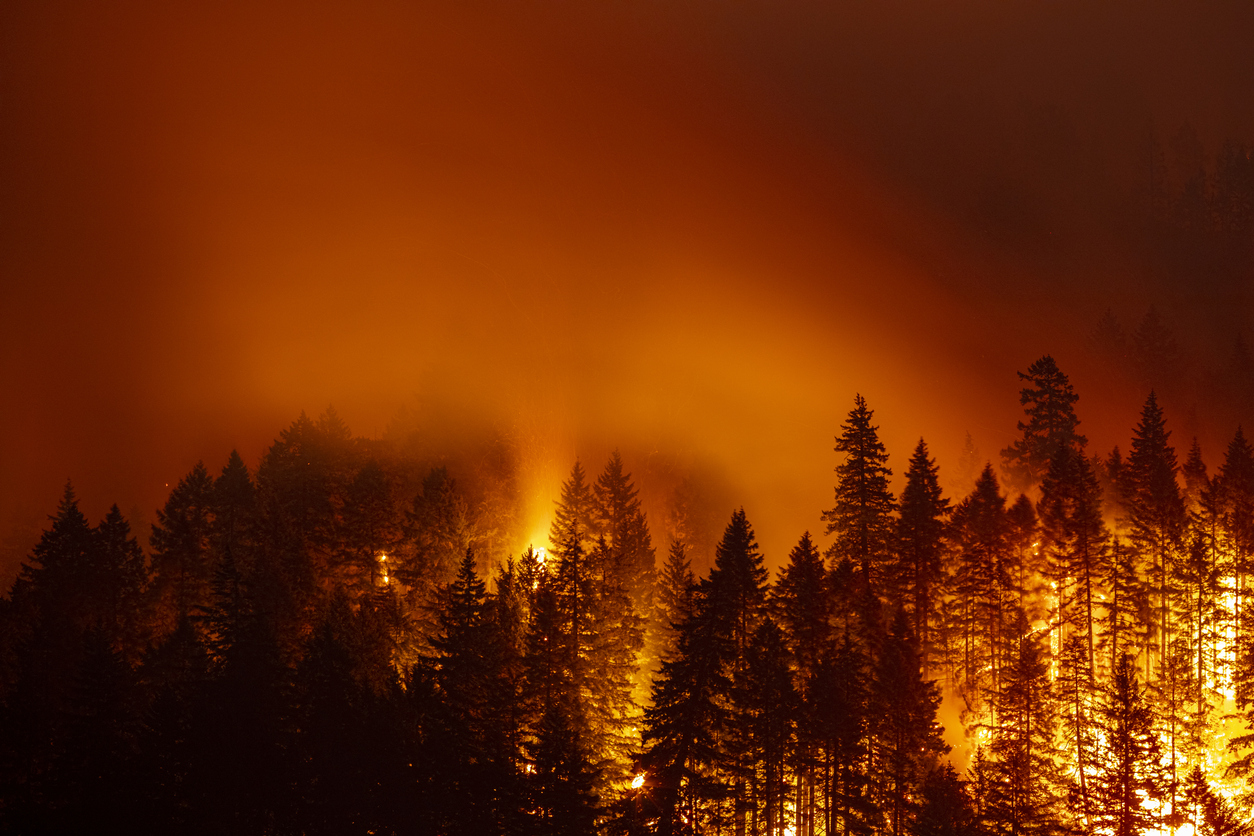In Oregon, thousands of people are sleeping on cots—without masks—at evacuation shelters.
Smoke from the fires has forced Covid-19 testing sites to close from Los Angeles all the way to northern Washington state.
And in Northern California, county officials are pushing the state to let restaurants resume serving food indoors so diners won’t have to eat in the smoke-filled air.
The wildfires both make it easier for the virus to spread and harder for people to take precautions, according to health experts.
Peter Chin-Hong, an infectious-disease specialist at the University of California, San Francisco Medical Center, said smoke from the fires irritates the respiratory systems of people infected with Covid-19, making it more likely that they will cough. Healthy people, meanwhile, are likely more susceptible to contracting the virus, Dr. Chin-Hong said, because the smoke irritates the lining of their throats, making it “easier for the virus to land.”
At the same time, poor air quality along the West Coast, including in cities far from major fires, is forcing many people indoors, where the coronavirus spreads more easily.
“We’re telling people to stay home, stay inside, close the windows” to maintain decent air quality, said Jennifer Vines, health officer for Multnomah County, Ore., where Portland is located. “That goes against so much of our Covid messaging about good ventilation and taking activities outside to lower the risk of spread.”
Dr. Vines said visits to hospital emergency departments for asthma-like symptoms have almost doubled since the fires began, putting health-care workers at greater risk from the virus and forcing them to use personal protective equipment more quickly than usual. In addition, multiple Covid-19 testing sites in the county remained closed on Monday, as did the state laboratory that processed many of the tests.
The tens of thousands of people who have been ordered to evacuate pose problems as well.
Many are staying with friends or family. “So people may be mixing at the household level, which we know is the highest risk for Covid,” Dr. Vines said.
Others are turning to aid groups for emergency shelter.
In Oregon, most of these people have been put into hotel rooms, where they won’t have contact with other households. “But because of the scope and the scale of these fires, there’s not enough hotel rooms for everybody,” said Dale Kunce, chief executive of the American Red Cross Cascades Region.
More than 2,000 people have stayed overnight at Red Cross shelters across Oregon. Evacuees have their temperatures taken when they arrive. Cots are spaced out more than 6 feet, and people are required to wear face masks indoors—but not in bed.
Instead of the usual buffets, meals are served in individual packages and people are allowed to eat indoors, Mr. Kunce said.
In California, many cities have embraced outdoor dining during the outbreak, turning parking lots, sidewalks and even streets into makeshift dining rooms.
Now, eating outside is impossible in much of the state.
In Butte County, where 2020’s deadliest wildfire in California is burning, county officials briefly lifted a ban on restaurants serving customers indoors, in defiance of state rules. The county reversed course a few days later. But other nearby counties have asked state officials to lift the restriction on indoor dining.
James Gallagher, a California assemblyman who represents parts of Butte County, said encouraging people to eat outside in the smoke “makes no sense” and he has encouraged restaurants to let patrons back inside, with or without state permission.
“It’s safer for people to eat indoors right now than it is to be outside in the smoke and ash,” Mr. Gallagher, a Republican, said.
California health officials didn’t respond to requests for comment.
Before the fires, California, Washington and Oregon had both made progress slowing the spread of Covid-19, and officials said they had plans in place to control the disease when fire season arrived in the fall. In Mendocino county, in Northern California, hotels were required to keep a quarter of the rooms open in case they were needed for evacuees.
Now, officials worry those plans may not be adequate.
“This is the most severe fire season that we’ve had, and we haven’t even gotten into the heart of [it] yet,” said Noemi Doohan, the deputy health officer for Mendocino county.













